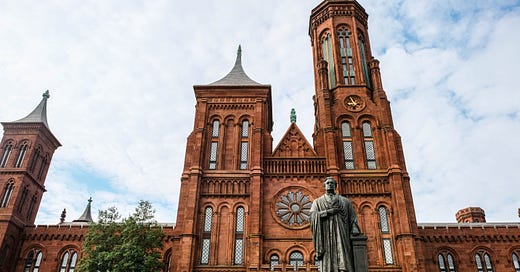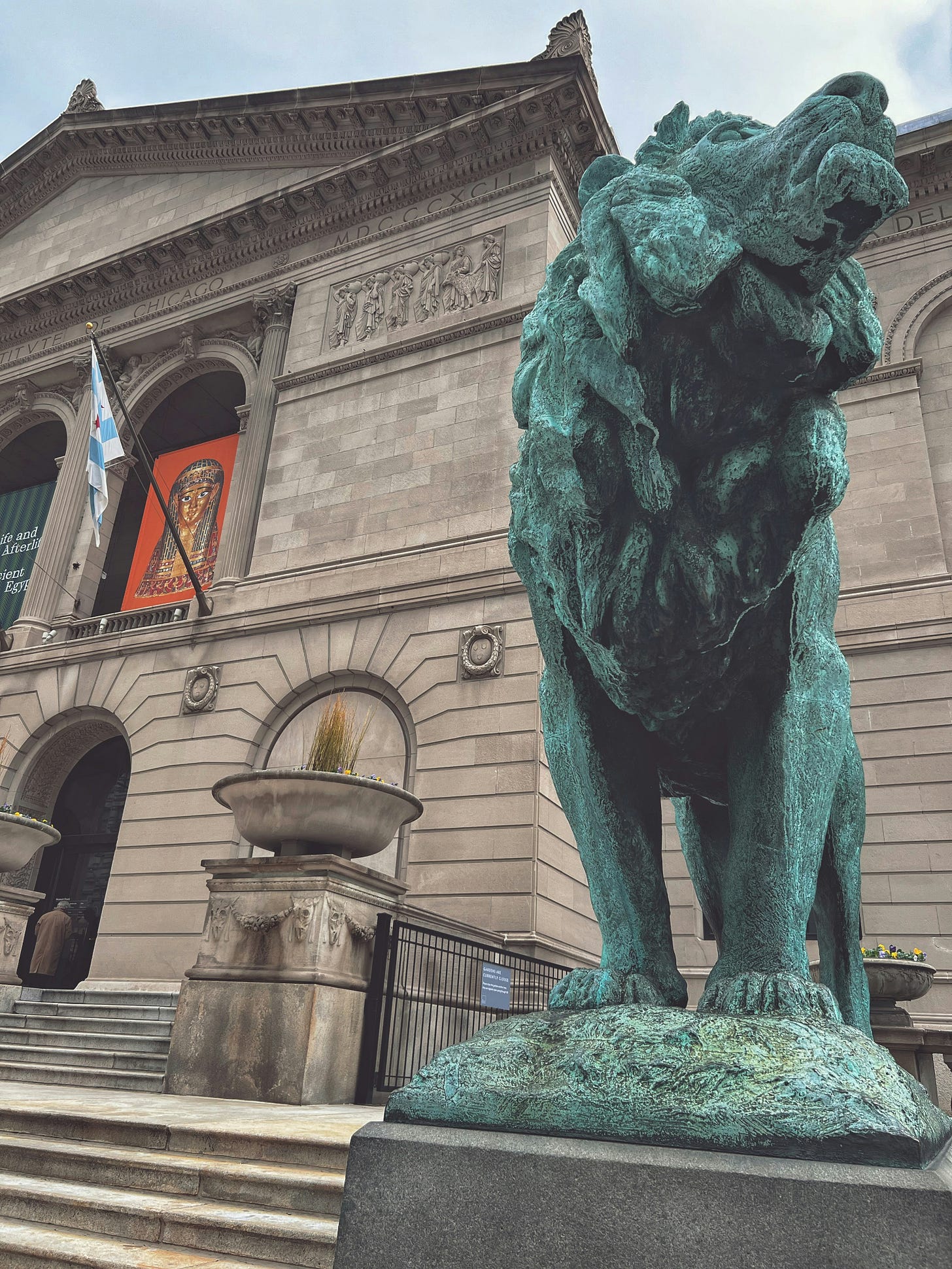Museums are consistently ranked among the most trusted institutions in the United States. A 2001 study commissioned by the American Alliance of Museums found that nearly 9 out of 10 Americans consider museums trustworthy—a level of confidence unmatched by any other type of institution. Americans trust museums because they are seen as mission-driven and educational. Also, they are respected because of the level of research undertaken by experts in their fields.
Not only do we trust museums, we rely on them as places for discovery and connection. We learn about the Etruscans, a people that we’ve heard the name of but knew nothing about. We admire an intricate painting, different from anything we’ve seen before, done by an Australian Aboriginal. Our kids take a museum class and make paper, something they’ve never done before.
Museums are also places of connection. It might be social connections as we visit and interact with our family, our neighbors, or our church group. It’s also personal history connections. We nudge our cousin saying, “Remember how Grandpa had one of those in his workshop?” Or we feel delighted as we peruse an exhibit about the history of Thailand, where our ancestors came from.
We can also celebrate museums as “third spaces.” This term was coined by sociologist Ray Oldenburg to describe community spaces that are not home and not work, but are vital for community building and social connection. Museums of all sizes and in locations across the country are spaces to gather, learn, socialize, and step away from daily challenges.
As Lonnie Bunch, the Secretary of the Smithsonian with 21 museums and 21 libraries said, “Culture is the glue that holds everything together. It’s how communities come together, how we express concern, love, passion.”
Lonnie Bunch has a PhD from American University. He’s like 60-70% of museum professionals who have advanced degrees, either master’s degrees or PhD’s. This includes directors, curators, conservators, archivists, librarians, educators, registrars, and more. These professionals bring a depth of knowledge, curiosity, creativity, and commitment to their jobs. They research, evaluate, and prepare exhibits. They create special events, programs, and classes. All this is done along with the fundamentals of collecting and preserving museum collections.
Another aspect of museum professionalism and knowledge is the awareness that history changes. It’s simplistic and untrue that history is a series of facts that don’t change. Examples include how research uncovered that the original cause of death of King Tut was not murder as it was thought for years, or that Columbus was not the first European to arrive in America, or that the diet of early humans was not mostly meat, as was originally thought. History changes according to the discovery of new documents, new archeological digs, DNA testing, advanced imaging technologies, and more.
In the past, museum visitors tended to be white folks with college educations. In the 1980s, museums began stretching themselves to attract a more diverse audience and to expand their exhibits and programs to be welcoming and relevant to more people. Today, data shows that when adjusted according to their population size, visitors are almost equally spread among whites, blacks, Hispanics, and Asian Americans. More than half of museum visitors have a high school degree, some college, or an associates degree. Slightly less than half of museum visitors are college graduates. Museums are very conscious of the role they’ve played in helping this shift happen, and they work hard to meet these diverse audiences.
Museum professionals, especially in large museums like the Smithsonian, or the Metropolitan Museum of Art, or the Art Institute of Chicago, work hard to fit together the pieces of collections care, research, exhibits, and the visitor experience. They provide opportunities to expand our knowledge and to connect us to the stories of people similar and different to each of us. When we leave museums, we might be filled with a sense of discovery, joy, thoughtfulness, or contentment.
We all want to feel represented when we visit museums. Those who delight in learning and discovery want to be represented by uncovering a new topic they know nothing about. Those who delight in expanding their knowledge about their ancestors, want to see who came before them. Those who delight in beautiful objects, want to see a plethora of art from across time and cultures.
We may not be wealthy, but we love seeing how the Vanderbilts lived. We may not be an athlete, but we’re delighted to learn about Mohammad Ali. We may have never visited Korea, but we’re enthralled to see Celedon pottery. We may not be Native American, yet we feel empathy when we hear about the Trail of Tears. We may not be descended from Russians, but we’re intrigued to learn about Russian art. We may not be Irish, but we’re excited to learn a few Gaelic words. We may not have lived through the Civil Rights era, but we weep when we learn about Emmet Till and his mother’s tears. We may not be a weaver, but we stand in awe of 16th century tapestries.
Right now, museums are under extreme stress. Funding is being cut. Stories about women and non-whites are under scrutiny or being eliminated. And the Administration is questioning the fundamental stories being told by the National Park Service and the Smithsonian. The limits that the Administration has already imposed and still intends to impose are altering and limiting our ability to see ourselves and to connect with others in museum settings.
If you’re distressed by what’s happening with museums right now, there’s no easy solution as to how to help. However, the first place is to contact Congress. Share a personal story about what museums mean to you and your family. Share that you believe in museums and what they do. Explain that you trust museums and their professional staff and that you want those professionals to oversee museums, not politicians.
You might also support museums by visiting, especially if you haven’t been recently. Or, you might purchase an annual pass for a museum you believe in, even if it’s not a museum that you plan to visit.
Another excellent way to support museums is to volunteer. Yes, the old volunteer format is still around: one day each week or month. However, museums have worked hard to provide alternative volunteer options such as projects you can do from home, or single event options. Check out your local museum’s website.
We trust museums. We believe in museums. And we need to speak up to help them continue the good work they already do.
NOTE: I don’t write this as a random person who loves museums. I’ve worked in museums, including the Metropolitan Museum of Art. I have an MA in museum studies. I’ve consulted with museums across the country including the U.S. National Arboretum. I’ve taught classes to museum professionals on strategic planning. I’ve volunteered in museums. I know how museums work. I believe in museums. I trust museums.





